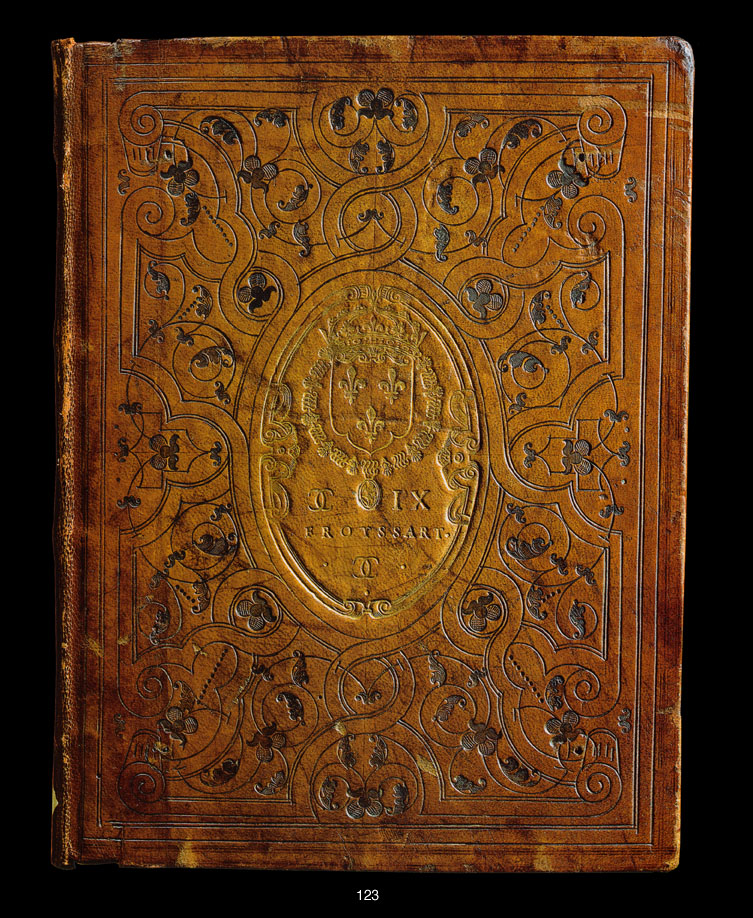

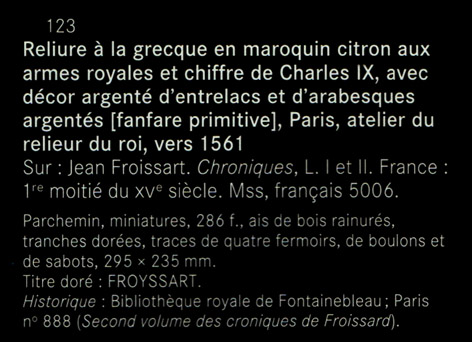
| In their 1999 chef d'oeuvre RELIURES ROYALES DE LA RENAISSANCE Fabienne Le Bars and Marie-Pierre Laffitte present the binding shown above, at the very end of their book,.They do not identify exactly the binder who fashioned the binding, they simply attribute it to Atelier du relieur du roi. According to the BnF, Claude Picques was the official relieur du roi from 1556 to 1578. In the detailed description given for this binding the authors state that is binding contradicts (a little) the claim by G. D. Hobson, that there are no early fanfare examples from this period on which we see Picques azured tools C.P. 47 and 57. The authors claim that both are found on this early fanfare example, binding 123. Below in Comparative Diagram 1, I have reproduced Hobson's text on this issue, note that his fig, 4b is C.P. 57 and fig. 4c is C.P. 47 (from Nixon's 1965 classification). |
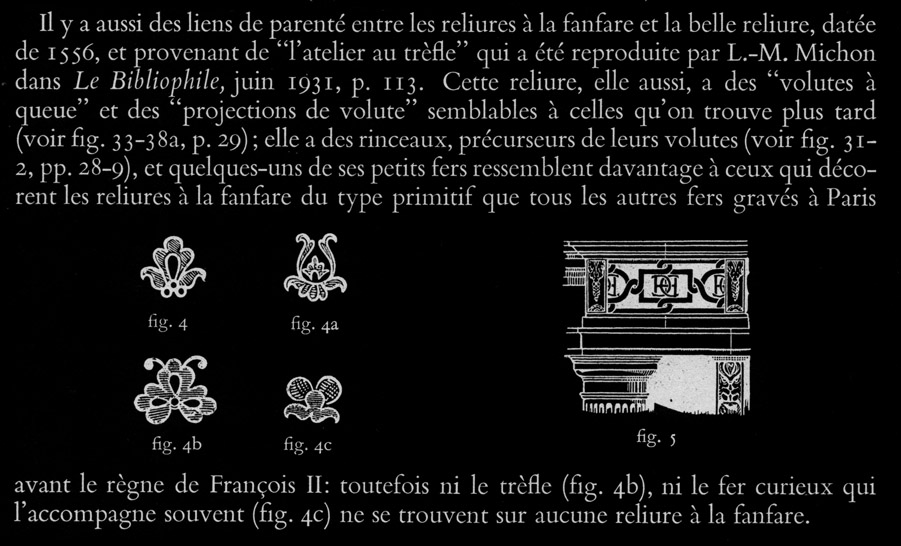
| I cannot see why Hobson would be so insistent on this point unless to intimate that Picques did not have a hand in the early fanfare bindings. This got me searching for the Picques tools on this binding and I did not find C.P. 57. The only Picques tool that can be found on this binding and also in Nixons classification of Picques tools is C.P. 47. I thought that seemed a bit strange so decided to test the 47 imprint just to make sure that it was genuine. Fortunately the BnF has made available online a binding which the attribute to Picques and estimate that it was executed somewhere around 1556- 1558. From this binding I extracted some C.P. 47 imprints. This same binding is also found in RELIURES ROYALES DE LA RENAISSANCE. After resizing both volumes to 100% scale and enlarging them to 600 dpi, I was able to create Comparative Diagram 2, where we find that these imprints and Nixon's rubbing are so similar we are forced to assume that they were made by the same tool. |
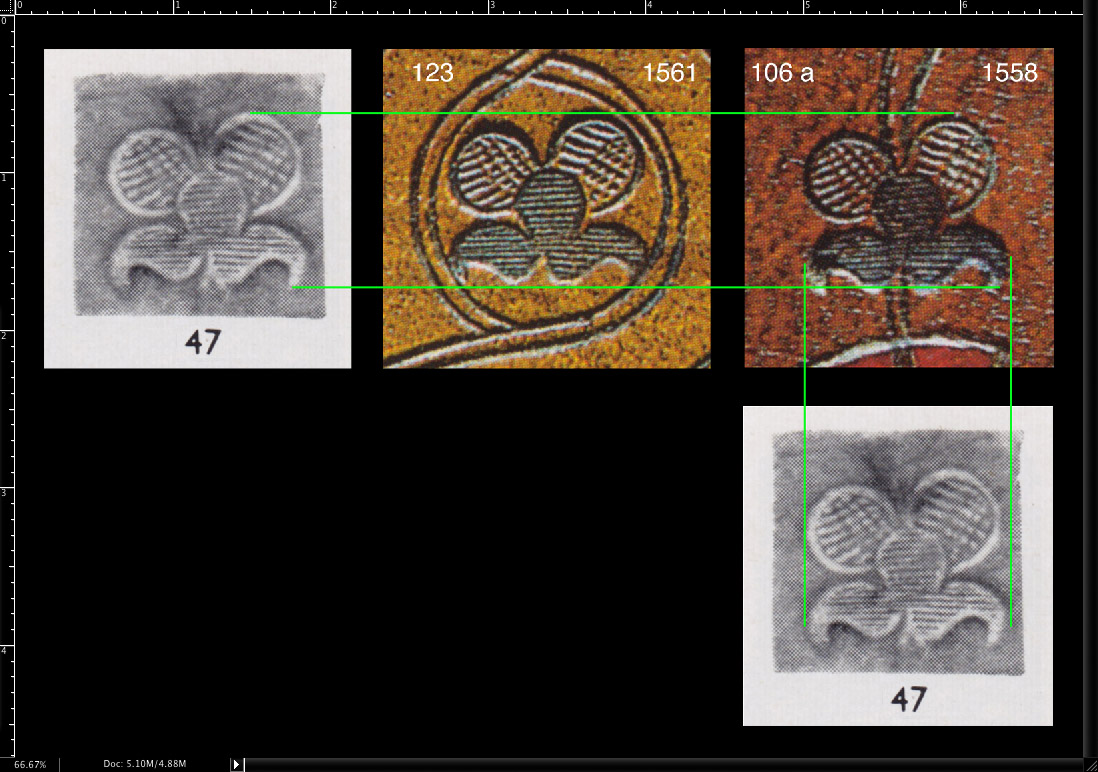
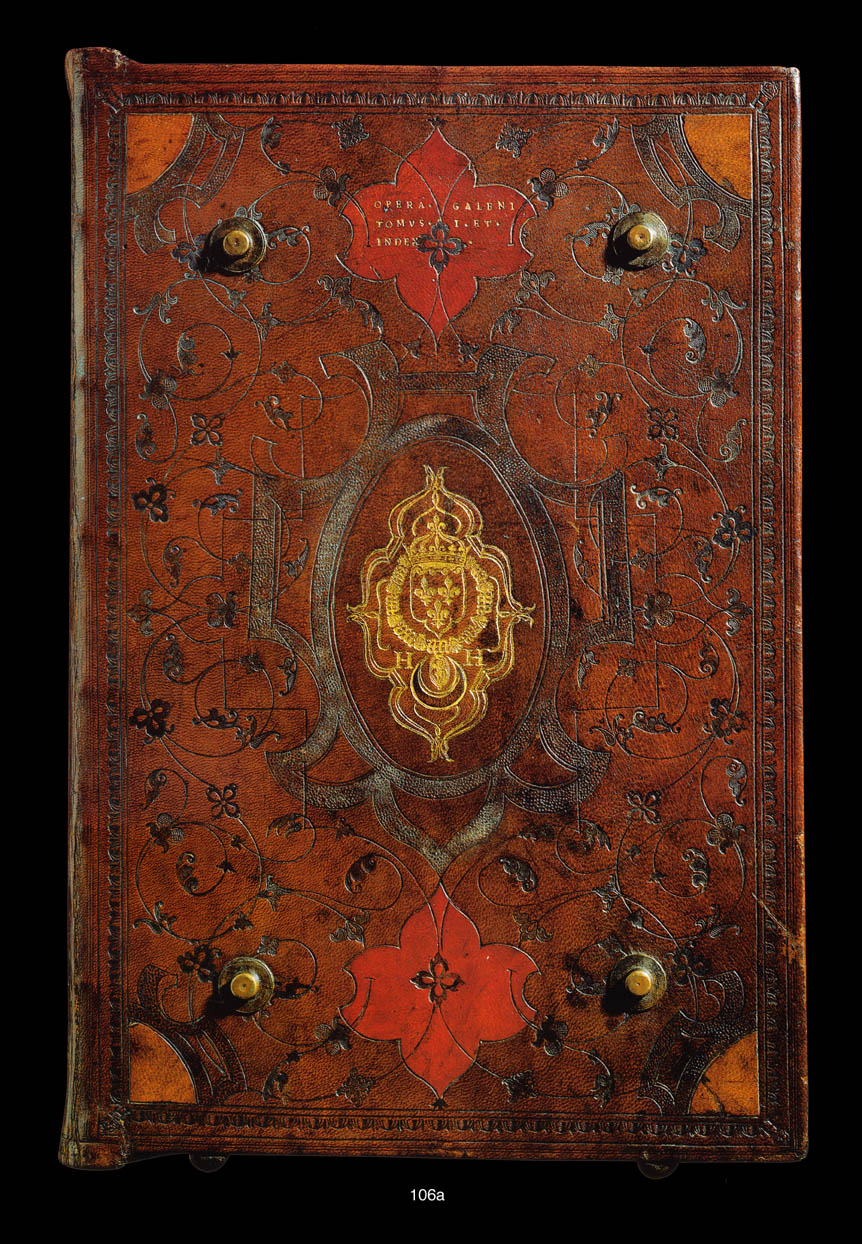
| I searched both these bindings for Picques tools and binding 106a has plenty, however there are also a few tools which are not in Nixons catalogue and one of those tools is also found on binding 123, this I tested thoroughly, first in Comparative Diagram 3, I assemble all the imprints from binding 106a. Nixon's 1965 catalogue of Picques tools lists 78 tools. Here I have added additional numbers to imprints that have not been recorded by Nixon. The imprints 79a and 79b are found on binding 123 however all the other tools used with the exception of C.P. 47 are tools that Nixon never discovered. |
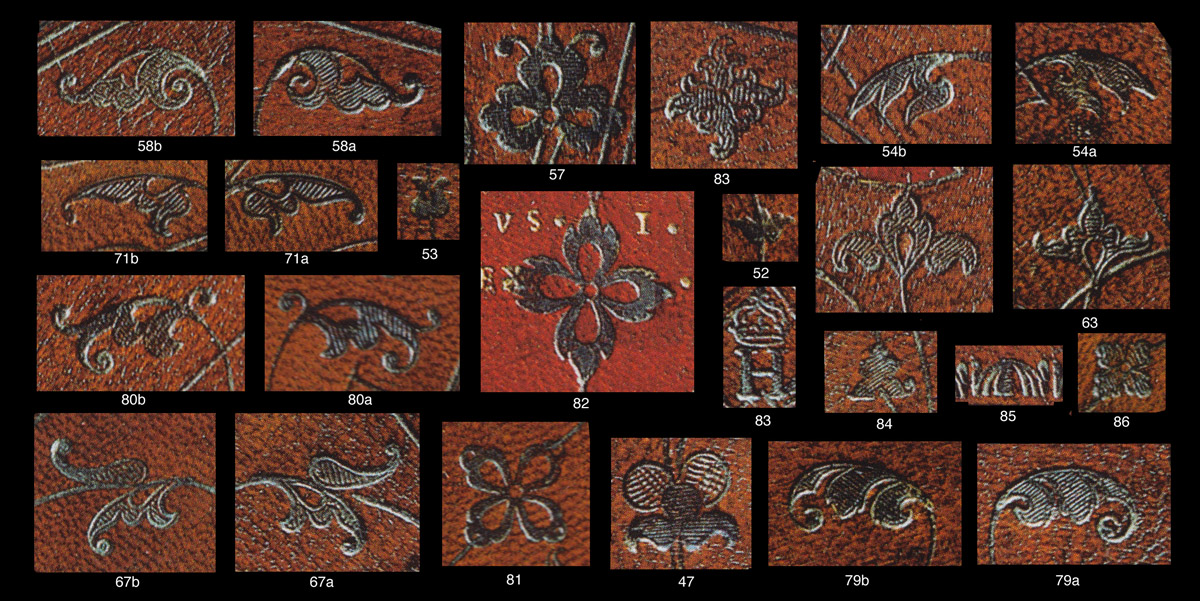
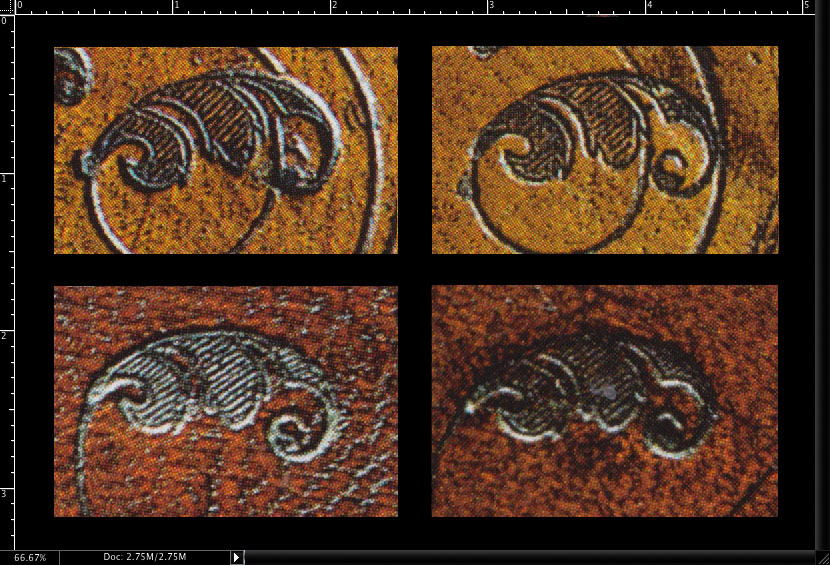
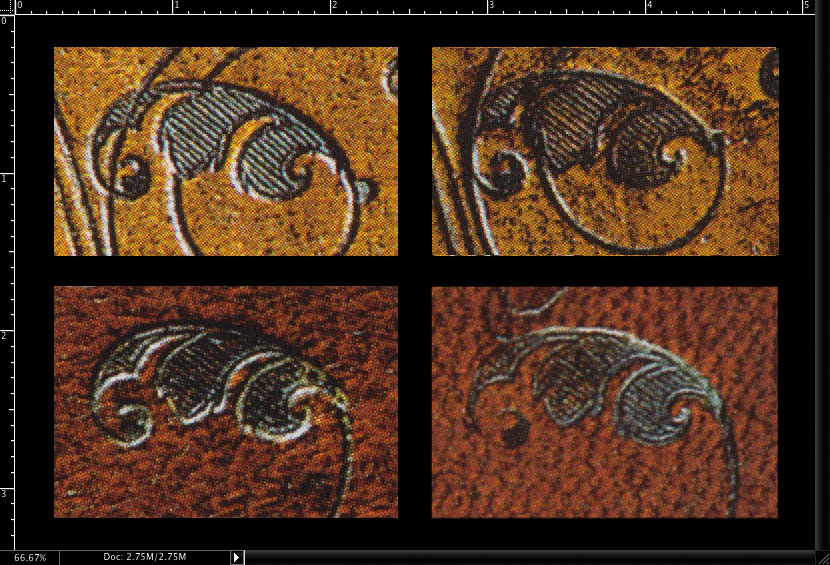
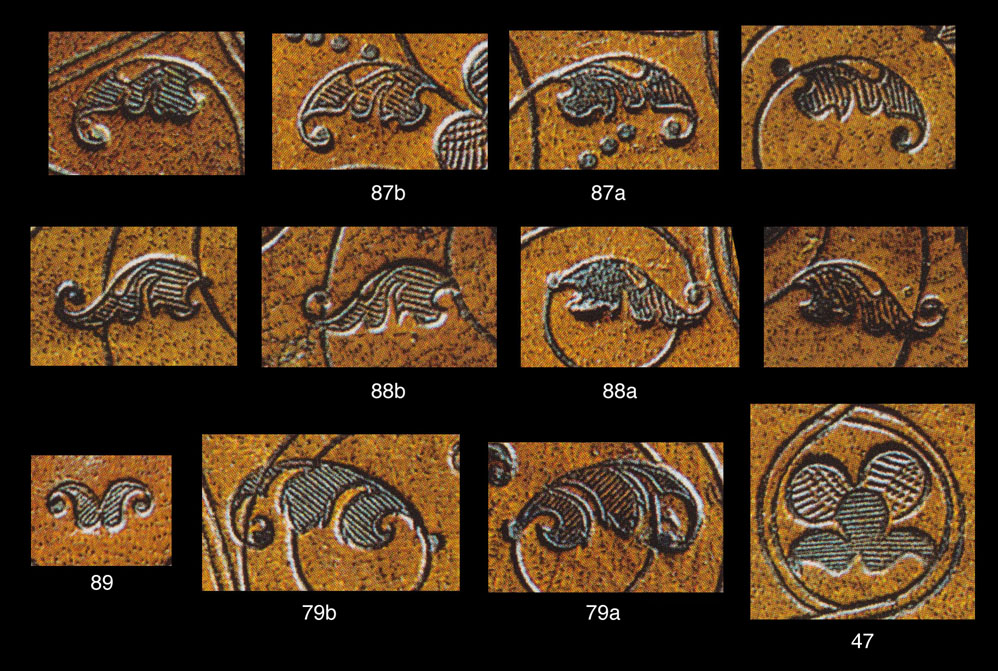
| We can confirm then, from these investigations that the imprints found on binding 123 derive from tools used by Claude Picques, particularly imprint C.P. 47 while C.P 57 is not seen on the front board of binding 123, (see the imprints of binding 106a for imprint C.P. 57). On the next page we are going to look briefly at the history of the Atelier du relieur du roi (1547 - 1572) in an attempt to show that the same tools used by Picard in the 1540's, remained part and parcel of this atelier and were kept in use for years after his sudden depart in 1547. Thus these tools appear in the bindings of Gomar Estienne and Claude Picques and perhaps other as yet unnamed binders who worked in this atelier. After the departure of Gomar Estienne perhaps around 1556 Picques would have been in charge, carried the title of relieur du roi and almost certainly he was the binder of this early (primitive) fanfare binding 123 shown at the top of the page that dates to around 1561. Some have suggested that Nicolas Eve was trained by Claude Piques, and it seems likely that fanfare evolved and developed from the collaboration of these two men. |
| click on this link to see the next page: Atelier du relieure du roi 1547 - 1572. |
| information about the author | return to the home page of VIRTUAL BOOKBINDING |